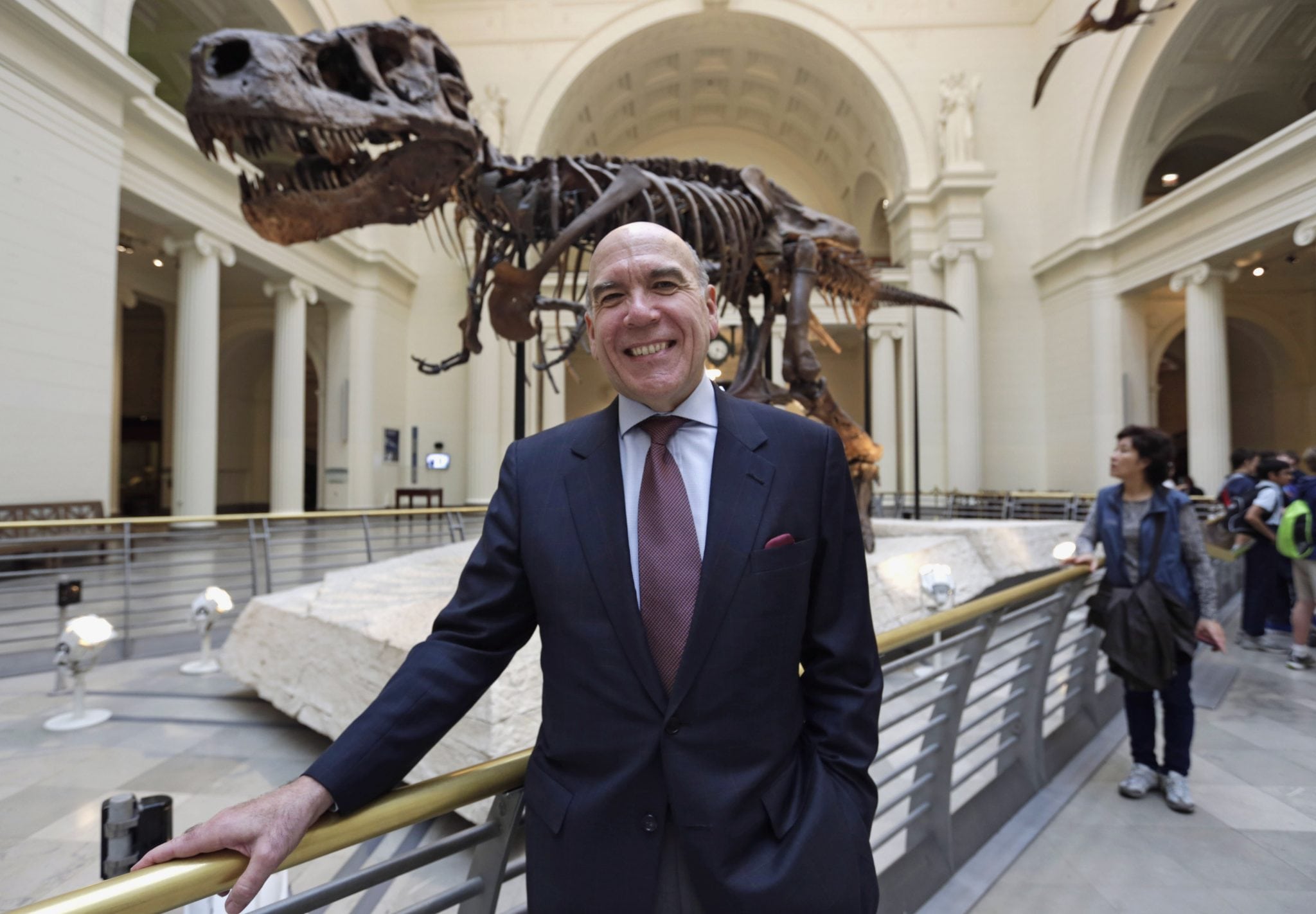Skift Take
The Field Museum is such an anchor for both locals and visitors in Chicago that it's difficult to imagine the museum's fund raising went as poorly as it did. It would appear that the new leadership should focus on the giving department.
Matt von Konrat is animated as he talks about a plant specimen pulled from the vast botanical collection at the Field Museum of Natural History. Documentation shows it was collected in 1996 in a Colombian rainforest and tested for compounds that might be used to treat HIV, AIDS or cancer.
“Imagine if you made some amazing drug discovery,” von Konrat says, sweeping an arm toward cabinets holding some of his department’s more than 3 million specimens, including ones collected by famed navigator Capt. James Cook in the 1770s. “You would know exactly where (the plant) came from and its exact identity” so you could find it again.
Best known for impressive public displays such as Sue, the towering Tyrannosaurus rex that greets visitors in the lobby of its Lake Michigan campus, the Field Museum’s larger mission always has been behind-the-scenes research on its 25 million-piece — and growing — collection of birds, mammals, fish, plants, fossils and artifacts. Field scientists travel the globe to retrieve specimens that could produce medicines, document the effects of climate change or explain the secrets of genetics.
But the 120-year-old museum, founded during the 1893 World’s Columbian Exposition and named for department store magnate Marshall Field, now is setting the scientific world abuzz for another reason.
Faced with almost $170 million in debt, the museum is cutting next year’s research budget 20 percent, including by shrinking its science staff and merging departments.
“It’s one of the great natural history museums of the world and has been for a very long time … but it’s on the verge of not being so important,” said Michael Donohue, curator of the botany department at Yale University’s Peabody Museum.
Since the beginning of the year, the museum’s anthropology, botany, geology and zoology departments have been merged into a single unit, and by the end of the year, its science staff likely will have been cut to 152, down from 170 earlier this year. That includes the loss of six of 27 curators, with two others still considering whether to leave.
The museum’s financial problems stem from a decision over a decade ago to issue $90 million in bonds for construction projects that included a subterranean storage center for much of its collection. The museum’s board assumed it could raise enough money through a capital campaign to keep the museum on solid footing.
But when that didn’t happen, it had to begin dipping into its endowment. Finally, in December, the museum announced that it would cut $5 million from its budget — $3 million of that from the science program — and would try to raise its endowment by $100 million.
Richard Lariviere, who took over as Field president in October, said the museum’s troubles, though real, are overstated, and the museum will emerge stronger within two years.
“We have financial challenges, but … we’re in very good shape,” he said.
But others say it’s doubtful the institution can sustain the same level of scientific inquiry or stage the most innovative exhibits.
“A good reputation and a good, quality program take decades to build, but it’s taken just six months” to damage both, said Mark Westneat, a 22-year Field veteran who was chairman of the former zoology department and whose research focuses on threats to coral reefs.
“I love this place, but there has been a needless ripping apart and disrespecting what I have loved over the years,” said Westneat, who’s negotiating with a university to move his laboratory there.
In the past, Field scientists used a decades-old collection of peregrine falcon eggs to draw a direct correlation between the use of DDT and thinning eggshells, leading to the pesticide’s ban. They’ve helped indigenous communities in Ecuador reclaim land damaged by oil drilling.
Donohue, the Peabody curator, said museums and universities rely on each other’s research to make scientific discoveries and advancements.
“To suddenly lose (scientists from) an important institution like the Field hurts the overall effort,” including such things as mapping where specimens are found, Donohue said.
Carroll Joynes, co-founder of the University of Chicago’s Cultural Policy Center, said all museums must take risks to stay fresh, but the Field took a big financial gamble.
“Then if it does not come true, you’re caught in a horrible expense bind,” said Joynes, adding that he believes the museum is now in good hands.
Copyright (2013) Associated Press. All rights reserved. This material may not be published, broadcast, rewritten, or redistributed. ![]()
The Daily Newsletter
Our daily coverage of the global travel industry. Written by editors and analysts from across Skift’s brands.
Have a confidential tip for Skift? Get in touch
Photo credit: Chicago's Field Museum reorganizes amid money woes. Associated Press
